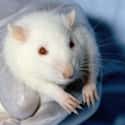-
(#8) The University Of Minnesota Determined Swimming In Syrup Is No More Difficult Than Swimming In Water
Edward Cussler, who oversaw Michael Hopkins's 2004 experiment at the University of Minnesota, admitted that "the bizarreness of the idea," is a reason it received funding. Sixteen people of varying swimming skills swam in a regular pool and a pool of guar syrup, which is twice as thick as water. The differences in their recorded times were negligible.
-
(#15) A 21st Century Study Tried To Determine If Fans Help In Extreme Heat And Humidity
Ollie Jay, Ph.D. of the University of Sydney wished to dispel the public health guidance that electric fans are actually dangerous in extreme heat. Jay and his colleagues tested 23-year-old men by putting them in temperature-controlled rooms, starting with temps at 97°F and 25% humidity and working up to 108°F with 70% humidity.
They measured heart rate and core temperature with and without the presence of electric fans to cool the subjects. They found that electric fans cooled the subjects.
-
(#12) A Stingray Robot Powered By Rat Cells Was Created In 2016
Harvard bioengineer Kit Parker wanted to see if he could power a robot stingray with light-powered heart-cells of rats instead of electricity. The experiment was costly, as the first stingray skeleton-bot was made of pure gold.
Parker discovered that rat heart cells can indeed power a robotic stingray sans electricity. The video above proves it.
-
(#3) Penn State Scientists Studied Turkey Sexuality By Seducing Males With Parts Of A Female
“Stimulate Eliciting Sexual Behavior” was the title of the study done by Dr. Martin Schein and Dr. Edward Hale of Penn State University on turkeys' mating preferences. They wanted to determine whether or not male turkeys are ready to procreate, even if their object of desire is just the severed head of a female. The scientists wanted to see precisely what got a tom turkey's engine revved, so they started with a completely intact (but dead and stuffed) female turkey, then tried removing various parts and documenting the males' level of interest. Apparently, male turkeys are less inclined to mate with a headless female's body than the opposite, as they were more interested in copulating with the severed head.
The scientists concluded it was the neck that was the deciding factor. While trying the same experiement with chickens, they found the exact opposite was true: they prefer headless bodies as sexual partners.
-
(#4) Science Taught Us Rats Prefer Jazz Over Beethoven, But Only If They're On Cocaine
If rats are going to be subjected to music, they prefer Beethoven over jazz. Albany Medical College made these findings in the course of their research, but they further discovered they could change those rats' preferences.
If rats were injected with cocaine, they suddenly enjoyed Davis's jazzy number, "Four." Even after the cocaine was out of their system, those injected with it preferred that song going forward over "Für Elise."
-
(#2) Dr. Robert E. Cornish Brought Dogs Back To Life In The '30s Using Seesaw Technology
Dr. Robert E. Cornish was a University of California-Berkeley grad who wished to master death. He unsuccessfully attempted this with humans, so he tried with dogs. He actually did see success there. On two occasions, he managed to bring dogs back to life that had just been killed via nitrogen gas suffocation. After the dogs were dead, Cornish fixed the dogs to a seesaw and began lifting them up and down to circulate blood flow while injecting them with anti-coagulants and epinephrine. The dogs returned to life and went on living.
After his dog success, Cornish wanted to try his method on a human once again. A death row inmate named Thomas McMonigle offered his body for experimentation post-execution, but the state of California wouldn't allow it, fearing the murderer would be immune to further prosecution if returned to life via the double jeopardy clause.
New Random Displays Display All By Ranking
About This Tool
In the history of biological evolution on the earth, the reason why humans can be completely distinguished from animals is that humans have autonomous consciousness and wisdom, and humans can understand the world and develop themselves through various experiments. Over the centuries, humans have done many weird, meaningless and even wrong experiments in the process of exploring science and discovery.
Science is the key to advancing the development of human society, and mankind has never stopped exploring unknown areas. The random tool introduced the 15 weirdest scientific experiments that you never know. Welcome to search for other hot topics in this random tool.
Our data comes from Ranker, If you want to participate in the ranking of items displayed on this page, please click here.
















